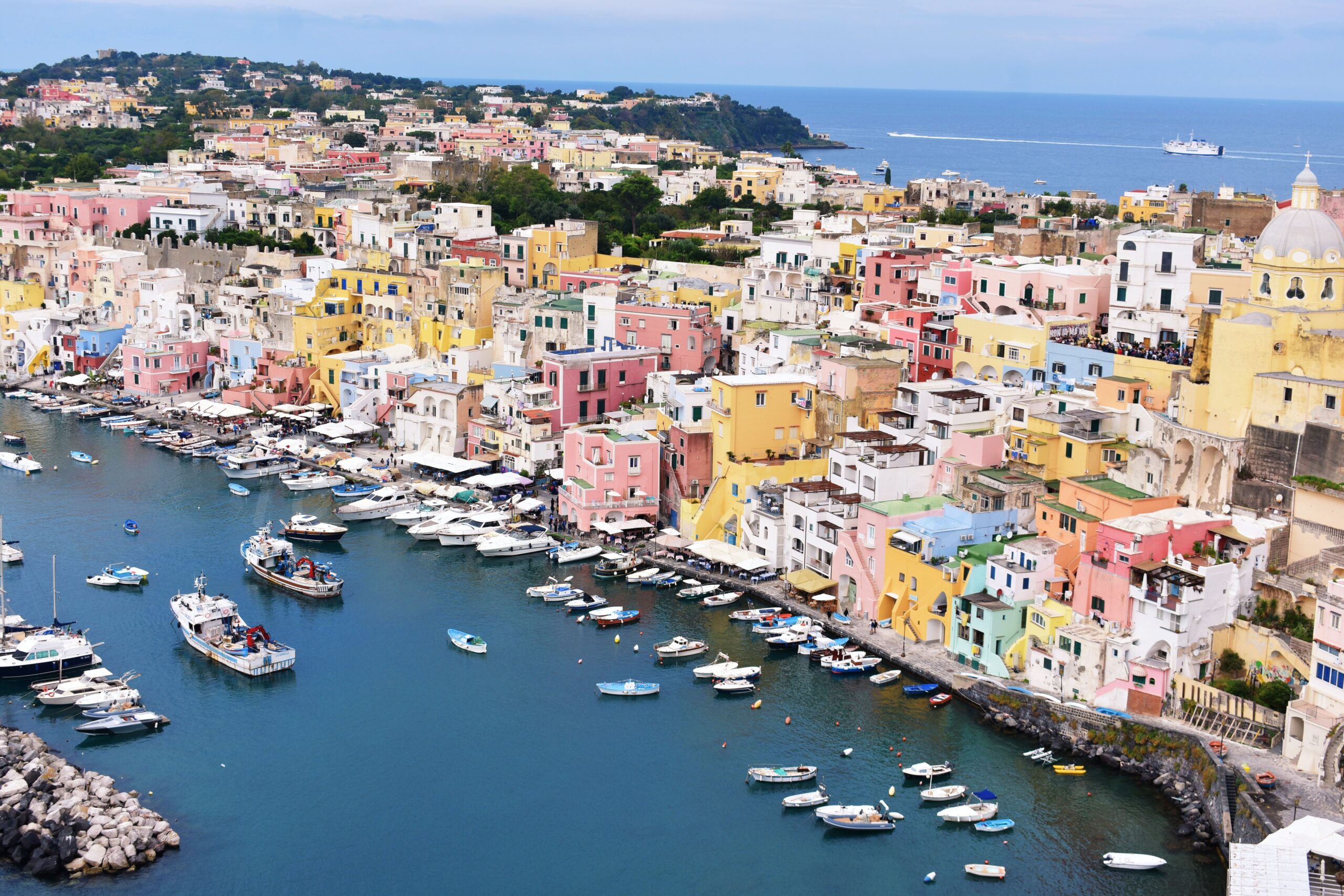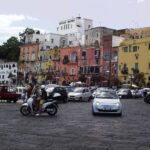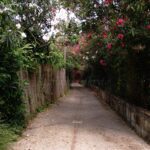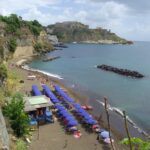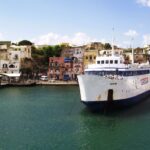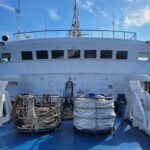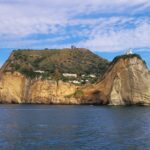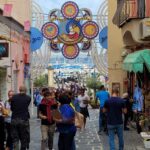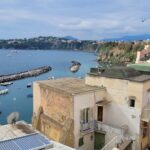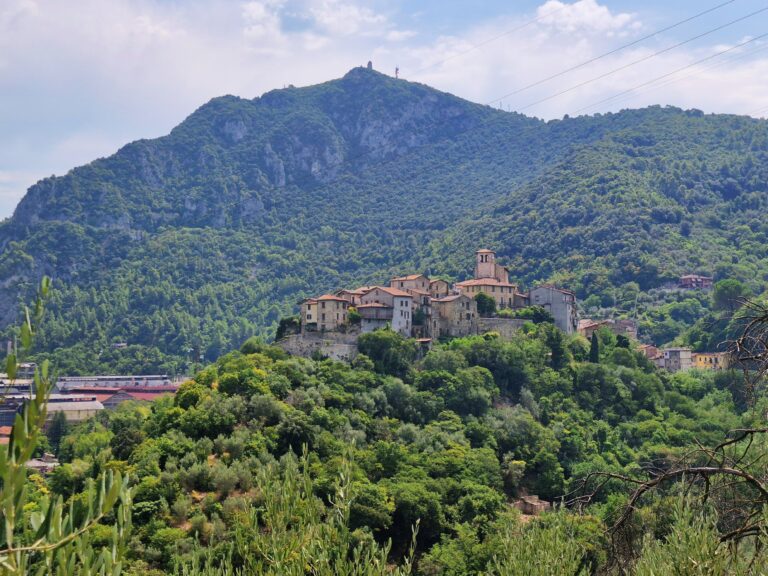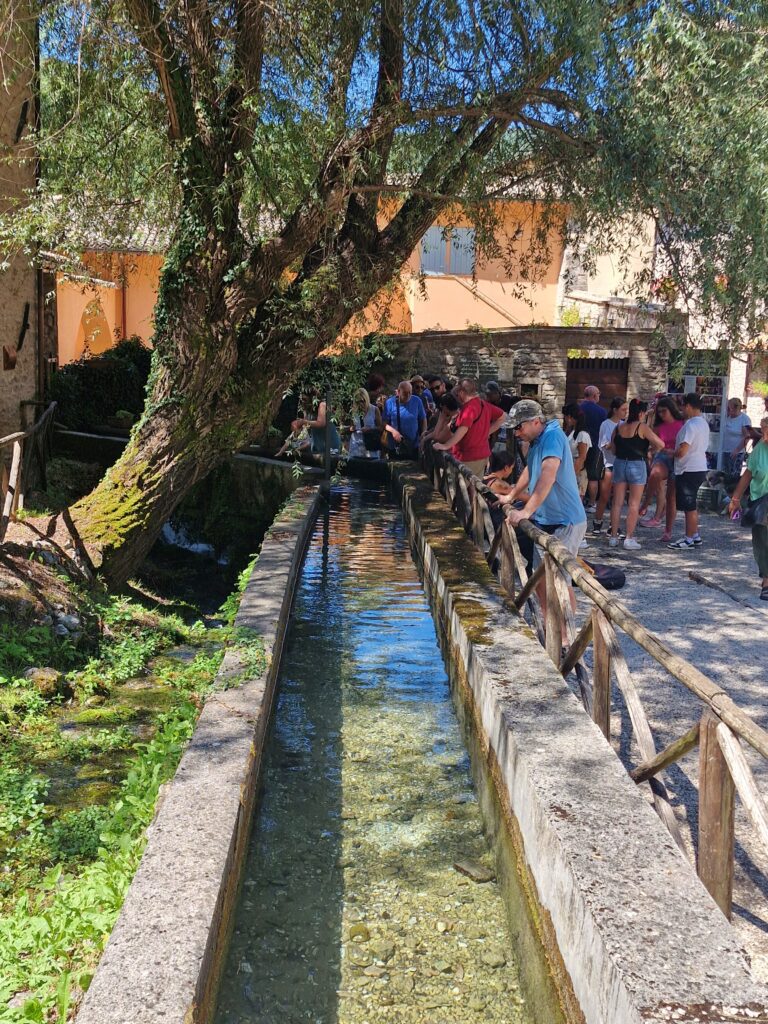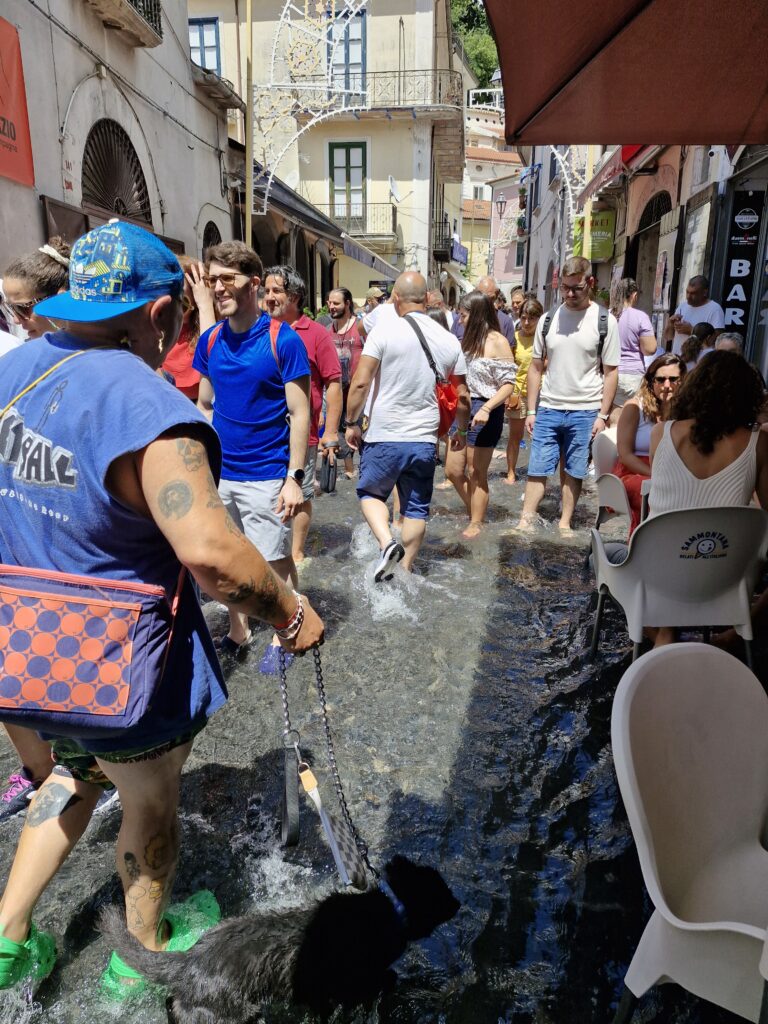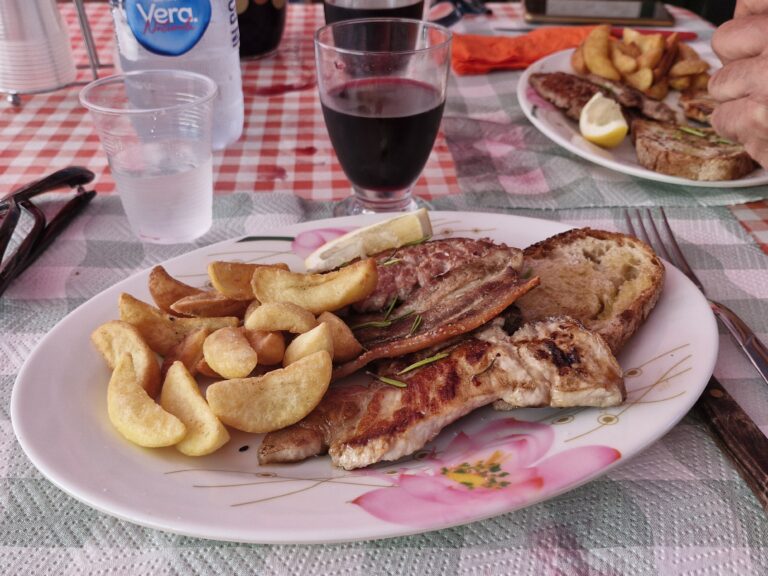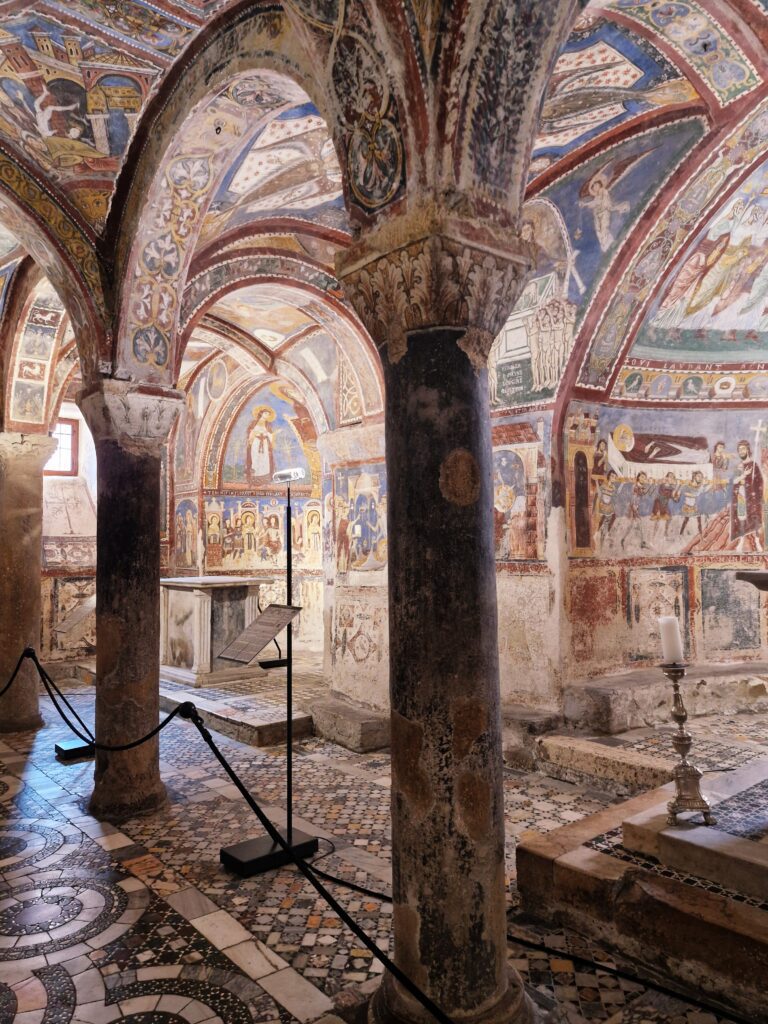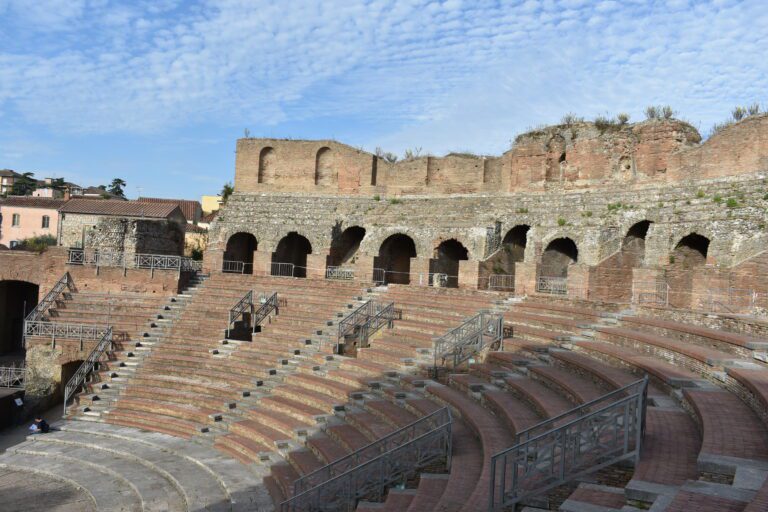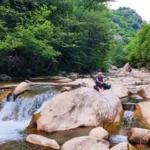Spending at least 1 day in Procida should be on the bucket list of everyone visiting Campania. Located closer to Naples, Procida is the lesser-known sister of the famous Capri. I visited the then-quiet Procida for the first time 10 years ago and after such a long time I returned on a beautiful October day to see if anything had changed. And yes, it had.
But before we went to the island we dropped in to Benevento, which has a reputation for being elegant and different from the rest of the cities in Campania.
The night before our 1 day trip to Procida we spent in Puzzuoli in a cheap and decent hotel. In the morning we checked out quite early, even though the ferry was at 10. Due to the beautiful October Sunday, Mauro predicted that visiting Procida for a day might be a popular option, which meant crowds at the port and queues for tickets. And he was right.
A short story about parking – what to watch out for.
We started our 1 day in Procida with not the best ‘Puzzuoli experience’. Finding a parking space, especially free parking, in Italy is always a challenge, especially since Southerners don’t like to pay for parking.
That’s why when we found free parking near the port the previous evening, Mauro was over the moon. In the morning, however, a black (but not always) self-proclaimed parking attendant was waiting for us in the same spot. This is a common practice in southern Italy. In free parking spaces, someone suddenly appears and “lets” you park for a small fee. This is an illegal practice.
The unemployment rate in the South is high and people are trying to make some money, but I honestly don’t care. Especially since very often, such extortion of fees is connected to the mafia, and even if it wasn’t, free means free. Italians generally pay illegal caretakers without any objection and then complain. The sight of the gentleman really irritated me, so I exchanged a few unpleasant words with him, after which we parked and went to the port.
Mauro was a bit worried that ‘something’ might break down in the car, so I suggested complaining to the police at the port. And what did the police say? Nothing. The police shrugged, said they knew about it, and advised us to move our car near the port. So we did. We didn’t give the self-proclaimed parking attendant a penny; when we were leaving, he threw insults and small stones at us. So if you see a guy at a free parking lot who wants money from you, you have two options: either pay or find parking somewhere else.
1 day in Procida – how to get there.
As for all islands: either by ferry, hydrofoil, or other means of sea transport from Naples, Puzzuoli, Ischia, and Capri, which are the closest places. You can also sail from Costiera Amalfitana, but in this case, the journey is longer. All ferries arrive at the main port of Procida.
In Naples, ferries of several operators depart from the port of Molo Beverello. Depending on the carrier, the journey time may vary, but generally, the Naples – Procida Island route will take about an hour. Remember that some ferries sail further, so it’s a good idea to listen to the announcements.
From Ischia, the ferry departs from Ischia Porto or Casamicciola, and the cruise lasts about 20-30 minutes in this case, too, Procida doesn’t have to be the final destination. The return journey is slightly longer due to the currents around the Bay of Naples.
We went from Puzzuoli, it took 30 minutes to get to Procida. Tickets can be bought at the ticket office in the port, or here. The afternoon return to Pouzzoli was sold out, so we had to go back to Naples. That’s why it’s worth getting tickets in advance, especially in the high season and avoiding such surprises.
We visited Procida in October and the ferry was packed with passengers. I thought that most of the people were going to Capri, as it was 10 years ago; then there were almost only foreigners on the ferry, and maybe 10 people got off at Procida, including me and my ex-husband. This time it was completely different. I think 99% of the passengers on the ferry were Italians and 95% got off at the port of Procida.
Procida’s surface area is less than 4.1 km². Its very rugged coastline is 16 km long. The 91m high Terra Murata hill is the highest point on the island.
A bit of history
As with most of the areas of present-day Italy, Procida was also crossed by various tribes/nationalities. According to archaeologists, the island of Procida was already inhabited in the 16th – 15th century BC. Around the 8th century BC, Greek settlers colonized the island, which was then occupied by the Romans, thanks to which the Roman elite had a place to relax and enjoy various entertainments, for sure spending much more than 1 day in Procida.
The next nation/tribe to take over Procida were the Goths; then the island was occupied by the Roman Empire in the East, which ruled it and suffered frequent raids by Saracen pirates until the 11th century.
From the mid-13th to the beginning of the 14th century, the Normans settled on the island, ruling a significant part of southern Italy. In the mid-15th century, the island of Procida, together with Naples and southern Italy, was ruled by the Aragonese of today. From the end of the same century, for about the next 300 years, Procida was part of the Spanish Empire. The island then fell under Austrian rule for a short time, before returning to the Spanish Bourbon family.
The Napoleonic Wars saw the French take control of the island, until Procida was eventually absorbed into the new Italian state in 1860.
Geologically, Procida was formed as a result of the eruption of four volcanoes, now dormant and submerged.
Getting around during 1 day in Procida
Procida is small, so it’s best to use your feet. Although the island is located in an area of volcanic activity and is mountainous, which means that the streets run up and down, so of course there are a lot of steps. But that doesn’t bother me, because I like walking. At a brisk walk, you can do the entire length of Procida in just over an hour.
Minibuses: 10 years ago there wasn’t such an option; it’s great that it is now. The buses operate on 4 lines and depart every 30 minutes from the Marina Grande port. A 60-minute ticket purchased at a bar, kiosk, or Caremar ticket office costs €1.20 and €1.40 if purchased from the driver.
Taxis: There is a taxi rank at the port. Prices may vary depending on whether it’s high season or not, so it’s worth asking how much the service will cost before using it.
Bikes: There are bike rentals on the island, so exploring Procida by bike is also a great option.
What to see in one day in Procida.
My first impression after 10 years was that the port had changed a lot. Compared to my first visit, there is a bike rental, lots of cafes, and signs in English. There are also minibusses that provide transport around the island, which is a great idea, especially when you have just 1 day in Procida. And many more tourist shops. The tourist boom was visible at first glance. Of course, it is not worth spending the whole 1 day in Procida in the port, so where to go:
The central part of the island of Procida is Ciraccio and Piazza Olmo, from which many small streets lead to various interesting places to visit, such as the church of St. Anthony, on Via Vittorio Emanuele II. On Via Cavour, behind the church, you can see the local cemetery.
Marina Corricella is the oldest and most absolutely charming fishing village of Procida. With its colorful houses arranged in an amphitheater in the sea, green and blue nets lying on the quay and the complete lack of vehicles, Marina Corricella is a slightly different world. The architecture in the 17th-century port of the village is great: arches, domes, windows, staircases, terraces, and multicolored facades of houses are interwoven there.
There are bars and restaurants in Marina Coricella, so you can spend some time relaxing there.
You can reach Marina di Corricella on foot or by bus/taxi:
On foot: Walk through the narrow streets of Via Vittorio Emanuele, Via Principe Umberto, Piazza dei Martiri, and San Rocco or another narrow street via Bernardi Scotti Galletta. The distance from Via Roma is about 1 km. Bus: line C2 EAVBUS, which goes to San Rocco; Marina di Corricella is just a stone’s throw away.
Terra Murata is the highest point, as well as the historical and cultural centre of the island, with a beautiful view of the Bay of Naples. Terra Murata is reached by a steep climb.
The village of Terra Murata, due to its strategic location, was the first inhabited centre on the island and had two entrance gates. The cluster of houses on the island was called Terra Casata and during the Saracen invasion, it was there that the inhabitants took refuge from the murderous guests. In the mid-16th century, La Terra was equipped with a defensive system with walls and watchtowers, and was then renamed Terra Murata.
In the centre of Terra Murata is the Palazzo d’Avalos, which in its history was sometimes a Royal Palace and from 1830 a prison. In 1988, the citadel was closed; today, Palazzo d’Avalos can be visited with a guide. Since we didn’t have tickets and there were wild crowds there, we looked at the citadel from the outside
It was similar with the church of Santa Maria delle Grazie Incoronata; due to the very long queue we didn’t get inside, but since I saw it 10 years ago, I didn’t regret it. The sanctuary of Santa Maria delle Grazie Incoronata was built in 1679 on the orders of Archbishop Innico Caracciolo. From the square next to the church you can admire a breathtaking view of the sea, Corricella and Terra Murata.
Abbey of San Michele Arcangelo is undoubtedly the religious centre of the island. The thousand-year-old (11th century) Benedictine abbey rises about 91 meters above sea level. The oldest part of the building dates back to the 15th century; however, there are historical records from 1026 indicating the existence of a monastery in this place. The Abbey of San Michele Arcangelo is one of the most prestigious and richest churches in southern Italy, with a book from 1534 in its library collection.
Santa Margherita Nuova Monastery, a place with a long history lies halfway between the village of Corricella and Terra Murata. In the 16th century, the Dominicans moved there because of the Saracen invasions. After being badly damaged in the 1950s, the monastery is still undergoing renovation.
Opened in 2011, Casa Graziella Museum , with an international tragic romance in its background is located on the second floor of the Palazzo della Cultura in Terra Murata
One fine day in 1811, the 21-year-old French poet and writer Alphonse De Lamartine arrived in Italy and spent 14 months on the island, where he fell in love with a local orphan, Graziella.
In 1849, Lamartine described the story of his love in a love story, of course slightly bending history. In his novel, Graziella is the daughter of a local fisherman with whom Lamartine stopped on the island. The gorgeous, naively simple girl makes the Frenchman’s heart beat faster and butterflies in his stomach.
Feeling the onslaught of feelings for Graziella, Alphonse abandons his refined French style (including his wardrobe) and decides to become a part of the simple life and local culture. The Frenchman, in love, spends his time on the island meeting Graziella, working together, and reading love letters. This idyll is interrupted by his unexpected departure for France. Alphonse promises his beloved that he will return to her as soon as possible. GGraziella, pining for her beloved, falls ill with consumption. Feeling that she is dying, she sends him a farewell letter with a strand of her hair.
200 years after the end of the love story, the association “La casa di Graziella” decided to open a museum whose mission is to promote the history and culture of Procida through the eyes of Graziella – the girl who died of love.
Faro is a must see even of you spend 1 day in Procida. Located behind the port of Marina Grande and offers a stunning panorama of the sea and the surrounding coast. It is also the symbol of the island – Faro di Procida, an ancient lighthouse from the 16th century. Faro is a great place for long walks along the coast, admiring the blue sea and breathing fresh air.
Vivara Island
Renamed a nature reserve in 2002, the island is currently closed to visitors, but when it is open (from May to October) be sure to visit. The remains of a volcanic crater, Vivara has an area of 34 hectares and is shaped like a crescent moon. It is also a tasty morsel for nature lovers due to its plant diversity and rabbits. Wild rabbits are a legacy of the King of Naples Charles of Bourbon, who, wanting to hunt, founded a rabbit farm on the islet. The king left behind the only building on the island, built by Prince De Guevara, which became the “Bourbon Hunting Lodge” and the rabbits that roam the island to this day.
Vivara Island is connected to the cape of Santa Margherita (Marina Chiaiolella) by a bridge that can only be crossed on foot.
Since Procida Island was full of people, we decided to visit the beaches.
Where to go to the beach having just a couple of hours in Procida.
The beaches on the island are small and sandy, but the sand is dark. We reached 2 of them and since it was a nice day, we spent some time soaking our feet in the water and basking in the sun.
Ciraccio (Chiaiolella) beach, separated from Ciracciello beach by a rock slide, is nice, quiet and sunlit all day long. You can get to Ciraccio in 15 minutes from Marina Grande by bus L1 or L2. The terrain allows you to hide in the shade, the water is nice and clear, and you can rent a kayak or a water bike there. Nice place. The cherry on the cake is Ischia, which can be seen from the beach.
Ciraceillo, on the other hand, is the longest stretch of sand on the entire island, which is why there are bars there. Ciraceillo offers a paid and free beach.
Spiaggia di Silurenza is about a 5-minute walk from the port of the island Marina Grande, along Via Roma (Grotte side). As with most beaches, you can pay for a sunbed, or lie on your own towel for free. The beach has decent infrastructure, which is why it is popular, especially with parents with children.
Chiaia Beach, near Marina di Corricella – you can take the L1 or L2 bus from Marina Grande. After about 10 minutes, get off at the stop near the ochre building with a path leading down to the beach. Chiaia is situated in a bay with beautiful views of the sea and the Sorrento Peninsula. It is great for families with children as the water is nice and shallow and there are good facilities for lunch and snacks, including the restaurant La Conchiglia which is right on the beach.
Pozzo Vecchio or Spiaggia Il Postino – you can walk there from the port and it takes about 30-40 minutes. Get off at the “Cimitero” stop on the C1 bus (the exit to the beach is just behind the cemetery).
Il Postino is the most famous beach, probably because of its connection with the film “Il Postino”, some scenes of which were filmed there. Pozzo Vecchio is small and pebbly, surrounded by cliffs, with a quiet and relaxing atmosphere. The water here is incredibly clear and turquoise, perfect for swimming and diving. Stay there until sunset, because it is worth watching this spectacle.
Where to eat:
Time flies fas if you’ve only a couple of hours in Procida. It was also in our case, so quite late (for Italy) we remembered to have lunch. Mauro, being a typical Italian, had to compare the menus of all the possible restaurants. Finally, we had a late lunch at Ristorante L’ Approdo near Marina Grande. Procida is famous for its fish and seafood, but you can find other dishes. In Procida, like the rest of this part of Campania, they love lemons, so pasta with lemon is often found on the lunch and dinner menu. Also, a variety of lemon-based desserts and sweets are available in bars and cafes. These local specialties are worth trying.
Return to Naples – avoid this option if don’t stay in Naples.
The ferry to Naples was around 5:30 PM; while waiting for the ship we were observing a growing crowd of people who finished their 1 day in Procida and waiting to be transported. It looked like the port was under siege.
If you have ever been to (southern) Italy, you may know that Italians are not the most polite people in the world. They rarely stand in line, push, disregard the rule that exits have priority, throw people to the entrance/exit, etc. Quite annoying. The embarkation/boarding looked like people being evacuated from a war zone. Everyone was pushing to get on the ferry and take a seat. It’s not the first time I’ve seen Italians on board (e.g. by plane) and it’s always the same. Anyway, we got on and were lucky because we managed to find seats too, what was nice as we spent 1 day in Procida walking a lot.
The ferry from Naples took 1.30 hours, so not long, but we also had to go back to Puzzuoli. And that was quite funny. I definitely think Italy is for drivers/tourists only. I don’t want to keep complaining about the lack of information, signs, or public transport, but I will. We couldn’t find the bus stop to Pouzzoli. Theoretically, the stop was at the port, but we couldn’t find it. We ran back and forth asking people for directions, finally, we decided to take the train (Circumvesuviana), but it left from a station 8 km from the port. Unfortunately, there were no taxis. We walked/ran like crazy because it was the last train. Hallelujah, we made it. We got to Puzzuoli and rode back to Manfredonia, talking about our 1 day in Procida.

